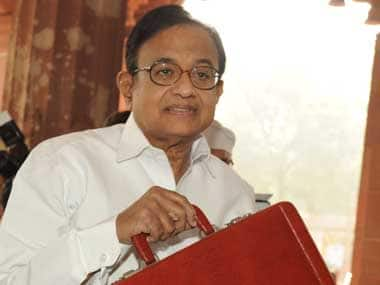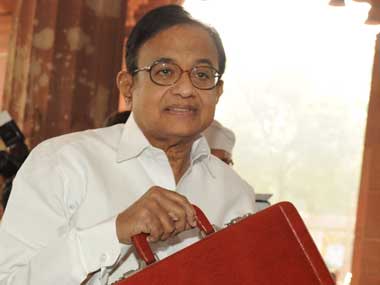If there is one thing you can credit the UPA 2 government with, it is their being able to carve out noble aspirations, visionary statements and lofty goals out of thin air. But that’s something anyone can do, if he has a room without a view to what’s going on in the real world, the hubris to not do anything in the face of slowing economic growth and sustained high inflation, and an army of spin doctors who can crunch past data to suit the present dismal economic scenario. Do we need a finance minister of P ‘Harvard’ Chidambaram’s outstanding calibre to tell us, for instance, that “manufacturing is the Achilles’ heel of the Indian economy” or that the “deceleration in investment in manufacturing is particularly worrying”? The National Manufacturing Policy that the UPA cabinet finally approved in its 25 October 2011 meeting said what Chidambaram repeated in his Interim Budget 2014-15 speech - increase the share of manufacturing in GDP to 25 percent from 15 percent and create 100 million jobs over a decade. We are more than two years down and the goal has not changed, the share of manufacturing has fallen and jobs are nowhere in sight.[caption id=“attachment_1394993” align=“alignleft” width=“380”]
 Union Finance Minister P Chidambaram. Image courtesy PIB[/caption] Other announcements that Chidambaram took credit for included eight National Investment and Manufacturing Zones (NIMZ) that the government had announced a year ago. These will run alongside the Delhi-Mumbai Industrial Corridor (DMIC), for which the government had signed a $90 billion MoU with Japan more than seven years ago, in December 2006. “Five NIMZs outside DMIC have also been given in-principle approval,” he said in Parliament, to the chorus of his anarchy-loving colleagues from Congress chanting “Save Andhra Pradesh”. While large projects are good and needed, the real drivers of employment are small enterprises. “Several measures have been taken to promote micro, small and medium enterprises, including notifying a public procurement policy, establishing technology centres and common facility centres, and launching the Khadi mark,” Chidambaram said. But what’s needed for small businesses and the accompanying jobs to mushroom are things that are far more basic. Among them: creating a one-stop online registration system for time-bound registrations for starting a business, for instance, from which all government agencies engaged in the regulation of that start-up can be picked up. Or allowing firms to fail and make the process of exiting a business simpler, faster, and cheaper. Or transforming the 1,000 employment exchanges into career centres that can enable job matching. While small enterprises create jobs and push innovation, an overall atmosphere that motivates them to stay small doesn’t work. Further, the control raj regime of the past has placed a huge burden on companies as far as labour protection goes. A noble objective, no doubt. But what it has led to is a reluctance to hire people and make do with machines—or worse, get out of manufacturing altogether. All told, there are 45 different national—and state-level labour legislations in India, according to Arvind Panagariya. Any firm that employs more than 100 workers, needs permission of the state government to lay off workers. Politics prevents that permission from coming. While a fair policy that protects both the labour and the investor are needed, companies have got around this by hiring contract labour. Since these laws will be impossible to change, all dreams about pushing manufacturing or increasing jobs will remain on paper, as announcements, to be showcased budget after budget, but with no real forward movement. A decisive action is needed, both on the legislative and the executive front. What the Financial Sector Legislative Reforms Commission report has done with financial sector laws, for instance, needs to be done in areas of the real economy that finance serves. After two years of intense study, the Commission was able to devise ways to deliver efficiency even without changing a single law. Chidambaram has done well to push that forward; the next government needs to apply it beyond finance. While the jump from agriculture to services is happening even in rural areas through road building, manufacturing is an essential base, which the young demographics of India desperately needs. Large companies will take care of themselves. It is the small, job-creating enterprises that needs hurdles removed. Else, large stretches of industrial areas, like Faridabad near Delhi, that are going the real estate way will increase. By addressing manufacturing in UPA 2’s last Budget, Chidambaram has done well. But with no action being taken on old grand announcements, we are neither surprised nor disappointed - not much is expected from this government. Chidambaram’s Budget is a vote of no-account.
Union Finance Minister P Chidambaram. Image courtesy PIB[/caption] Other announcements that Chidambaram took credit for included eight National Investment and Manufacturing Zones (NIMZ) that the government had announced a year ago. These will run alongside the Delhi-Mumbai Industrial Corridor (DMIC), for which the government had signed a $90 billion MoU with Japan more than seven years ago, in December 2006. “Five NIMZs outside DMIC have also been given in-principle approval,” he said in Parliament, to the chorus of his anarchy-loving colleagues from Congress chanting “Save Andhra Pradesh”. While large projects are good and needed, the real drivers of employment are small enterprises. “Several measures have been taken to promote micro, small and medium enterprises, including notifying a public procurement policy, establishing technology centres and common facility centres, and launching the Khadi mark,” Chidambaram said. But what’s needed for small businesses and the accompanying jobs to mushroom are things that are far more basic. Among them: creating a one-stop online registration system for time-bound registrations for starting a business, for instance, from which all government agencies engaged in the regulation of that start-up can be picked up. Or allowing firms to fail and make the process of exiting a business simpler, faster, and cheaper. Or transforming the 1,000 employment exchanges into career centres that can enable job matching. While small enterprises create jobs and push innovation, an overall atmosphere that motivates them to stay small doesn’t work. Further, the control raj regime of the past has placed a huge burden on companies as far as labour protection goes. A noble objective, no doubt. But what it has led to is a reluctance to hire people and make do with machines—or worse, get out of manufacturing altogether. All told, there are 45 different national—and state-level labour legislations in India, according to Arvind Panagariya. Any firm that employs more than 100 workers, needs permission of the state government to lay off workers. Politics prevents that permission from coming. While a fair policy that protects both the labour and the investor are needed, companies have got around this by hiring contract labour. Since these laws will be impossible to change, all dreams about pushing manufacturing or increasing jobs will remain on paper, as announcements, to be showcased budget after budget, but with no real forward movement. A decisive action is needed, both on the legislative and the executive front. What the Financial Sector Legislative Reforms Commission report has done with financial sector laws, for instance, needs to be done in areas of the real economy that finance serves. After two years of intense study, the Commission was able to devise ways to deliver efficiency even without changing a single law. Chidambaram has done well to push that forward; the next government needs to apply it beyond finance. While the jump from agriculture to services is happening even in rural areas through road building, manufacturing is an essential base, which the young demographics of India desperately needs. Large companies will take care of themselves. It is the small, job-creating enterprises that needs hurdles removed. Else, large stretches of industrial areas, like Faridabad near Delhi, that are going the real estate way will increase. By addressing manufacturing in UPA 2’s last Budget, Chidambaram has done well. But with no action being taken on old grand announcements, we are neither surprised nor disappointed - not much is expected from this government. Chidambaram’s Budget is a vote of no-account.
Writer and journalist, Gautam Chikermane explores the unholy trinity of money, power and faith. He is the New Media Director at Reliance Industries Ltd and a Director on the Board of CARE India. His latest book is the recently-released 'The Disrupter: Arvind Kejriwal and the Audacious Rise of the Aam Aadmi’. Follow him on Twitter @gchikermane
)